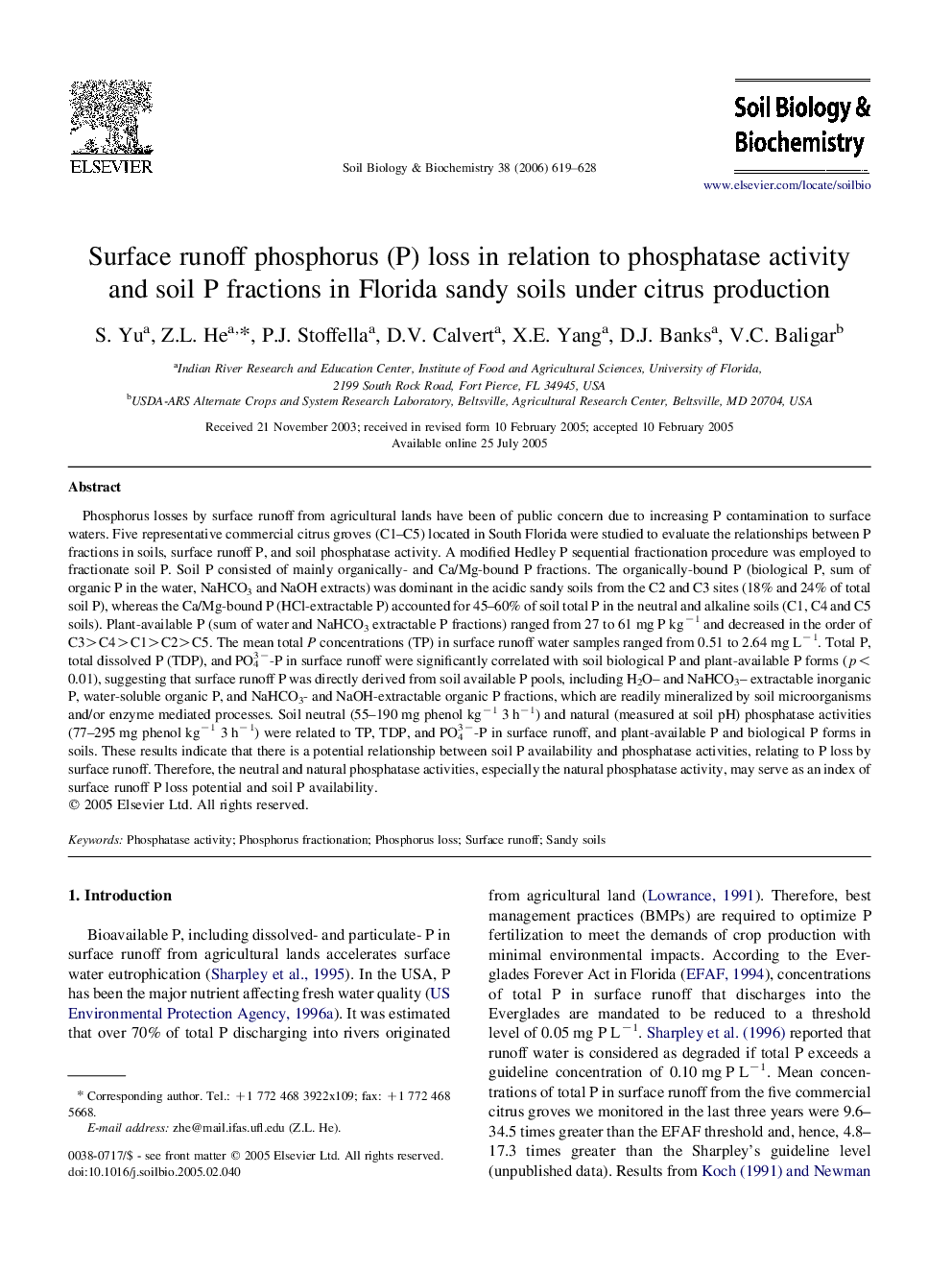| Article ID | Journal | Published Year | Pages | File Type |
|---|---|---|---|---|
| 2026701 | Soil Biology and Biochemistry | 2006 | 10 Pages |
Phosphorus losses by surface runoff from agricultural lands have been of public concern due to increasing P contamination to surface waters. Five representative commercial citrus groves (C1–C5) located in South Florida were studied to evaluate the relationships between P fractions in soils, surface runoff P, and soil phosphatase activity. A modified Hedley P sequential fractionation procedure was employed to fractionate soil P. Soil P consisted of mainly organically- and Ca/Mg-bound P fractions. The organically-bound P (biological P, sum of organic P in the water, NaHCO3 and NaOH extracts) was dominant in the acidic sandy soils from the C2 and C3 sites (18% and 24% of total soil P), whereas the Ca/Mg-bound P (HCl-extractable P) accounted for 45–60% of soil total P in the neutral and alkaline soils (C1, C4 and C5 soils). Plant-available P (sum of water and NaHCO3 extractable P fractions) ranged from 27 to 61 mg P kg−1 and decreased in the order of C3>C4>C1>C2>C5. The mean total P concentrations (TP) in surface runoff water samples ranged from 0.51 to 2.64 mg L−1. Total P, total dissolved P (TDP), and PO43−-P in surface runoff were significantly correlated with soil biological P and plant-available P forms (p<0.01), suggesting that surface runoff P was directly derived from soil available P pools, including H2O– and NaHCO3– extractable inorganic P, water-soluble organic P, and NaHCO3- and NaOH-extractable organic P fractions, which are readily mineralized by soil microorganisms and/or enzyme mediated processes. Soil neutral (55–190 mg phenol kg−1 3 h−1) and natural (measured at soil pH) phosphatase activities (77–295 mg phenol kg−1 3 h−1) were related to TP, TDP, and PO43−-P in surface runoff, and plant-available P and biological P forms in soils. These results indicate that there is a potential relationship between soil P availability and phosphatase activities, relating to P loss by surface runoff. Therefore, the neutral and natural phosphatase activities, especially the natural phosphatase activity, may serve as an index of surface runoff P loss potential and soil P availability.
